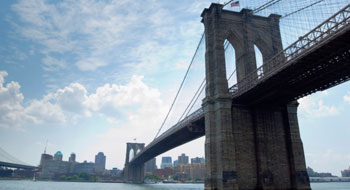
Why should institutional investors invest in the infrastructure space? Most pension plans need to match liabilities, and infrastructure investment is a way to do this, providing “real return protection,” said Janet Rabovsky, senior investment consultant with Towers Watson, speaking earlier this week at the Infrastructure Symposium 2011 in Toronto.
“Given the level of bonds, many of our clients are turning to infrastructure,” she continued, adding that infrastructure has a higher volatility than bonds but lower than equities.
“And given the amount of fundraising and the fees starting to be more reasonable, from a tactical perspective, it’s not a bad time to start investing in infrastructure,” she said.
Rajiv Bakshi, managing director with Manulife Capital, said there are definite advantages to this asset class:
- the diversification provides exposure to a large set of assets;
- by participating in infrastructure funds, investors get access to larger transactions; and
However, one downfall to investing directly in infrastructure is losing control of investment decision-making, Bakshi said, but that depends on how involved the plan can be, or wants to be, in the infrastructure space.
A lot of direct investing in the asset class is set up as consortiums, said Michael Dorrell, senior managing director of the Blackstone Infrastructure Fund. You may have “five people trying to democratically manage these assets. Just be aware of going in with partners that have the same values.”
One area that’s tough for investors is the newness of infrastructure investing. It’s a young asset class—and that means no track record.
There’s no readily available benchmark that’s tracking universe infrastructure assets, said Kevin Fahey, director, investments, with the CAAT Pension Plan. “We use the CPI plus 5%—inflation protection and the return premium.”
Bakshi agrees. Inflation protection is important, he stressed. “With no clear benchmark, investors have to look at closed end funds and other private funds they’re invested in now.”
Not only is there no track record, infrastructure is also a volatile asset class. Rabovsky said investors should look for higher returns to compensate for the amount of risk. Similarly, Dorrell said investors need to consider if the investment has the “competitive edge” that will be sustainable into the future. For example, will an airport be around in 15 years? “Has it got that sustainable competitive advantage?”
Rabovsky hopes to see more core infrastructure products over the next few years. Right now, she’s seeing a lot of interest in renewable energy-type products as well as Asian infrastructure.
